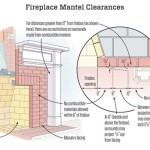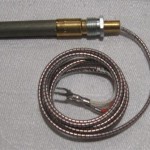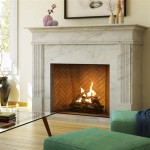Freestanding Ventless Ethanol Fireplaces: A Comprehensive Guide
Freestanding ventless ethanol fireplaces have emerged as a popular alternative to traditional wood-burning or gas fireplaces, offering a blend of aesthetic appeal, ease of installation, and environmental consideration. These fireplaces operate using denatured ethanol, a renewable fuel source that burns cleanly, producing minimal emissions. This guide provides a comprehensive overview of freestanding ventless ethanol fireplaces, covering their benefits, operation, safety considerations, and maintenance.
The allure of a fireplace often lies in its ability to create a warm and inviting atmosphere, evoking feelings of comfort and relaxation. However, traditional fireplaces require chimneys or venting systems, posing installation challenges and potentially limiting placement options. Freestanding ventless ethanol fireplaces circumvent these limitations, offering a versatile solution for homeowners seeking the ambiance of a fireplace without the complexities of conventional systems.
The functionality of a freestanding ventless ethanol fireplace hinges on its design and the properties of ethanol fuel. The fireplace typically comprises a fuel reservoir, a burner, and a decorative housing. The burner is designed to control the rate of fuel consumption and the resulting flame size. The fuel reservoir holds the denatured ethanol, which is poured directly into the burner or a separate fuel tank. When ignited, the ethanol vaporizes and burns, producing a clean, smokeless flame.
The absence of a venting system is a defining characteristic of these fireplaces. The combustion of ethanol produces primarily carbon dioxide and water vapor, in significantly smaller quantities than produced by traditional fireplaces. While these emissions are minimal, adequate ventilation in the room where the fireplace is located is still crucial. Carbon monoxide production remains a potential, albeit low, risk if combustion is incomplete due to improper fuel or inadequate oxygen supply. Therefore, carbon monoxide detectors are always recommended.
The design of freestanding ventless ethanol fireplaces varies widely, ranging from contemporary minimalist styles to traditional designs that mimic the look of wood-burning stoves. Many models incorporate features such as adjustable flame heights, remote controls, and safety sensors. The aesthetic versatility of these fireplaces allows them to seamlessly integrate into various interior design schemes, enhancing the visual appeal of any living space.
Ease of Installation and Placement
One of the key advantages of freestanding ventless ethanol fireplaces is their ease of installation. Unlike traditional fireplaces that require extensive construction and venting systems, ethanol fireplaces can be placed virtually anywhere in a room, provided there is sufficient ventilation and clearance from flammable materials. The installation process typically involves simply unpacking the fireplace, placing it in the desired location, and filling the fuel reservoir. No gas lines, electrical connections, or chimney construction are necessary.
The portability and flexibility of freestanding ethanol fireplaces are also noteworthy. They can be easily moved from one room to another, or even taken outdoors (weather permitting), allowing homeowners to enjoy the ambiance of a fireplace in different settings. This adaptability makes them an attractive option for individuals who rent their homes or frequently relocate.
The elimination of venting requirements translates into significant cost savings. Traditional fireplace installations can be expensive due to the labor and materials involved in chimney construction or gas line installation. Freestanding ventless ethanol fireplaces eliminate these costs, making them a more affordable option for many homeowners. The cost of the fireplace itself, and the ongoing cost of ethanol fuel, are the primary expenses associated with this type of heating appliance.
Safety Considerations and Precautions
While freestanding ventless ethanol fireplaces are generally considered safe when used properly, it is crucial to adhere to specific safety guidelines to minimize the risk of accidents. The primary safety concerns associated with these fireplaces involve the handling and storage of ethanol fuel, the potential for spills, and the risks associated with open flames.
Always use denatured ethanol specifically designed for use in ventless fireplaces. Other types of alcohol or fuel can produce dangerous fumes or burn improperly, posing a significant safety hazard. Store ethanol fuel in a cool, dry place, away from heat sources and open flames. Keep the fuel container tightly sealed to prevent evaporation and accidental spills. Be sure to purchase fuel from reputable manufacturers with detailed safety information and instructions.
When filling the fuel reservoir, exercise caution to avoid overfilling or spills. Use a funnel to pour the fuel slowly and carefully. Wipe up any spills immediately with a damp cloth. Never attempt to refill the fuel reservoir while the fireplace is still burning or hot. Allow the fireplace to cool completely before adding more fuel. Keep flammable materials, such as curtains, furniture, and paper, at least three feet away from the fireplace. Never leave a burning fireplace unattended, especially in homes with children or pets.
As with any open flame appliance, it is essential to have working smoke detectors and carbon monoxide detectors in the vicinity of the fireplace. Regularly test these detectors to ensure they are functioning properly. If you suspect a carbon monoxide leak, immediately ventilate the room and contact emergency services.
Consider models with safety features, such as flame sensors that automatically shut off the fireplace if it is tipped over or if the flame becomes unstable. These features provide an added layer of protection, reducing the risk of accidents.
Maintenance and Fuel Considerations
Maintaining a freestanding ventless ethanol fireplace is relatively straightforward. The primary maintenance task involves cleaning the burner and the surrounding area to remove any soot or residue that may accumulate over time. Regular cleaning helps ensure optimal performance and prolongs the lifespan of the fireplace.
Use a soft cloth and a mild cleaning solution to wipe down the exterior surfaces of the fireplace. Avoid using abrasive cleaners or solvents, as these can damage the finish. For stubborn stains or residue on the burner, use a specialized fireplace cleaner specifically designed for ethanol fireplaces. Follow the manufacturer's instructions carefully.
The type of ethanol fuel used in the fireplace significantly impacts its performance and the quality of the flame. Denatured ethanol with a purity level of at least 95% is generally recommended. Lower-quality ethanol may contain impurities that can produce smoke, odors, or uneven burning. The cost of ethanol fuel varies depending on the quality, quantity purchased, and the supplier. Purchasing in bulk can often result in cost savings.
The burn time of an ethanol fireplace depends on the size of the fuel reservoir, the flame height setting, and the efficiency of the burner. Some models can burn for several hours on a single filling, while others may require more frequent refueling. Monitor the fuel level and refill as needed, following the safety precautions outlined earlier. Some users choose to purchase decorative fireplace accessories to enhance the aesthetics and functionality of their ethanol fireplace. These accessories may include artificial logs, stones, or glass beads that surround the burner, creating a more realistic fireplace look.
Finally, the environmental considerations surrounding freestanding ventless ethanol fireplaces are significant. Denatured ethanol is produced from renewable sources, such as corn or sugarcane, making it a more sustainable fuel option compared to fossil fuels. The combustion of ethanol produces fewer greenhouse gas emissions and air pollutants than traditional wood-burning or gas fireplaces. However, it is essential to consider the overall carbon footprint of ethanol production, including the energy used in growing, harvesting, and processing the raw materials. Choosing ethanol from sustainable sources can further minimize the environmental impact.

Double Sided Freestanding Ethanol Fireplace Vu Ignis

Ignis Black Ventless Ethanol Fireplace Vitrum L

Ignis Portable Ventless Ethanol Fireplace Cube Xl

Ignis White Bioethanol Fireplace Vitrum L

Customized Freestanding Bio Ethanol Fireplace Suppliers Good Inno Living

Ignis White Freestanding Ethanol Fireplace Tectum Mini

The Bio Flame Rogue 2 0 Ss Fireplace Rouge2 0ss Rouge Us

Regal Flame Dora Ventless Free Standing Ethanol Fireplace In White Com

Mecca Freestanding Ventless Ethanol Fireplace Ul Cul Screen Porch Living

Bio Ethanol Fireplace Ventless Freestanding Heater With Real Flames Black 1 Unit City Market
Related Posts








